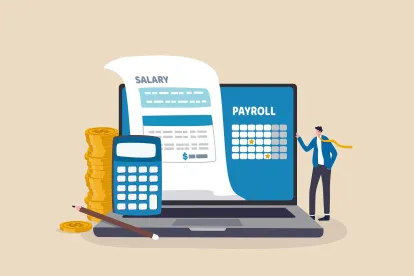Introduction
Employers across the country need to pay close attention to developments in California relating to its pay transparency law, also known as Senate Bill 1162 (SB 1162). For many years, pay transparency was a more limited concept, focused on employees being able to discuss their pay with other employees without reprisal. This has been an obligation for federal contractors, for example, since 2015. The pay transparency addressed in SB 1162 is a much broader concept, however, applying to both applicants and employees, and requiring that pay ranges be included in job descriptions and made available to employees upon request. When combined with increased pay data reporting obligations, and the fact that so many companies do business in California (the largest sub-national economy in the world), the California pay transparency law is truly a game changer.
In this alert, we will discuss the state-of-play before SB 1162 and how SB 1162 has materially altered not only how companies approach recruiting through job descriptions and listings, but also even how they do business. We will also provide best practices to consider in seeking to comply with the law.
What Are The Relevant Existing Laws?
To understand SB 1162 and its implications for employers, it is first important to review existing obligations under California law.
Pay Reporting Laws
Under existing law, employers with 100 or more employees are required to file annual pay data reports with both the Equal Employment Opportunity Commission (EEOC) and, since, September 2020, the California Department of Fair Employment and Housing (DFEH). These reports primarily obligate employers to report:
1. The number of employees by race, ethnicity, and sex in each of the following 10 job categories:
-
Executive or senior level officials and managers
-
First or mid-level officials and managers
-
Professionals
-
Technicians
-
Sales workers
-
Administrative support workers
-
Craft workers
-
Operatives
-
Laborers and helpers
-
Service workers
2. The number of employees by race, ethnicity, and sex, whose annual earnings fall within each of the pay bands used by the U.S. Bureau of Labor Statics in the Occupational Employment Statistics survey;
3. The total number of hours worked by each employee counted in each pay band during the relevant reporting year.
Pay Scale Posting Law
Additionally, under California Labor Code Section 432.3, employers must provide the salary or hourly wage range to applicants who have completed their initial interview. Employers may not inquire about the candidate’s historical pay data and may not rely on such information to determine whether to make an offer of employment or what the offered salary should be.
What is SB 1162?
SB 1162 became effective as of 1 January 2023. The law is a two-fold amendment to the California Government Code and California Labor Code, intended to further California’s public policy towards promoting pay transparency. It has created vast interest and concern among employers regarding the new compliance obligations it creates.
What Change Under SB 1162?
SB 1162 has two primary impacts: one relating to pay reporting obligations and one relating to pay notification obligations.
The law expands pay reporting obligations under the Government Code. Employers have until 10 May 2023 to submit their first pay data reports.
The amendments to the Government Code regarding pay reporting include:
-
Expanding the scope of employers who must report pay to include those employers who employ 100 or more employees hired through labor contractors;
-
Moving the deadline to file with the DFEH from March to (the second Wednesday) of May;
-
Requiring the pay data reports to include the mean and median hourly wage rates for each combination of race, ethnicity, and sex within each job category;
-
Deleting the existing provision that allows employers with multiple establishments to submit a consolidated report for each establishment;
-
Deleting the existing provision authorizing an employer to submit an EEO-1 report in lieu of a pay data report; and
-
Providing civil penalties in the amount of US$100 per employee for an employer who fails to file the required report, or US$200 per employee for any subsequent failure to file the required report.
Additionally, SB 1162 expands pay notification obligations under the Labor Code.
The amendments to the Labor Code regarding pay scale notification include:
-
Providing the pay scale (defined as “the salary or hourly wage range the employer reasonably expects to pay for the position”), upon request, to current employees for the position in which the employee is currently employed;
-
Requiring employers with 15 or more employees to include the pay scale for a position in any job posting (including those hosted by a third party);
-
Requiring employers to maintain records of a job title and wage rate history for each employee for the duration of the employment plus three years after the end of the employment;
-
Providing civil penalties for violations of these provisions (which could be recovered under the Labor Code’s Private Attorneys General Act).
How Does A Company Determine The Pay Scale to Include with The Position?
Moving forward, employers may consider posting the entire pay scale from entry level to maximum for the job title at issue to ensure all information is conveyed. SB 1162 affords some leeway through the phrase “employer reasonably expects to pay” in its definition of “pay scale.”
Some employers are concerned that by posting the entire pay scale, applicants may face confusion when they are offered a position at the lower end of the scale. One approach is to use specific job titles that reflect an employee’s position on the pay scale, such as “senior data analyst” and “junior data analyst.”
Employers should ensure that the information provided to a current employee requesting the pay range is consistent with the posted pay range. Although there is likely some flexibility to provide additional information to an employee requesting information about how the range is calculated, or what their chances are of reaching a higher part of the range, that additional information should nevertheless be consistent with any posted information. In other words, the maximum salary communicated to an employee should not exceed the maximum salary in the posted pay scale. Additionally, employers with offices in more than one location may consider indicating that within the posted range there are differences based on geography and costs of living.
Moreover, consistent language should be used to satisfy both statutory obligations. Any discrepancy may be used to demonstrate a lack of full transparency. Moreover, employers should avoid an ad hoc approach that risks leaving different stakeholders with different information.
Does The Pay Scale Include Bonuses and Total Compensation?
This is unlikely given the terms “salary or hourly wage” are used. This is subject to change pursuant to agency guidance.
Who Qualifies as A Labor Contractor and Labor contractor Employee?
A labor contractor is an individual or entity that supplies, either with or without a contract, a client employer with workers to perform labor within the client employer’s usual course of business.
A labor contractor employee is an individual on a labor contractor’s payroll, including a part-time individual, for whom the labor contractor is required to withhold federal social security taxes from that individual’s wages, and who performs labor for a client employer within the client employer’s usual course of business.
Do I Need to File A Labor Contractor Employee Report?
Employers are required to file a Labor Contractor Employee Report with the California Civil Rights Division (CRD) if the employer has 100 or more labor contractor employees (inside and outside of California) and has at least one employee in California.
When reporting to CRD, client employers must include their labor contractor employees assigned to California establishments or working within California. Unlike in years past, employers may not report employees who are both working outside of California and are assigned to an establishment outside of California.
Thus, CRD expects that a single-establishment employer in California will include on its Labor Contractor Employee Report all labor contractor employees (including any labor contractor employees outside of California who are assigned to California establishments) whether or not teleworking, because all of the labor contractor employees report to a California establishment in this scenario.
-
For example, if an employer has a single establishment in Riverside, California with 500 labor contractor employees working from that location, the employer would submit a report covering all 500 labor contractor employees. If 25 of these labor contractor employees were working remotely (in California or beyond) but were assigned to the Riverside location, the employer’s report would still cover all 500 labor contractor employees.
Similarly, CRD expects that a multiple-establishment employer with establishments only in California will include across its establishment-level data in its report all labor contractor employees (including any labor contractor employees outside of California) whether or not teleworking because in this scenario all of the employer’s establishments are in California.
-
For example, if an employer has 5,000 labor contractor employees working across 10 establishments in California, the employer’s Labor Contractor Employee Report would cover all 5,000 labor contractor employees, reported by establishment and by labor contractor. If 100 of these labor contractor employees were working remotely (in California or beyond), the employer’s report would still cover all 5,000 labor contractor employees, and the 100 remote labor contractor employees would be assigned by the employer to their associated California establishment.
For multiple-establishment employers with establishments inside and outside of California, the employer reports to CRD on its California establishments, all of its labor contractor employees assigned to those California establishments whether or not teleworking (including any labor contractor employees working outside of California), and any other California labor contractor employee (including those teleworking from California but assigned to an establishment outside of California). Employers may not report labor contractor employees who are working outside of California and are assigned to an establishment outside of California.
-
For example, if an employer has one establishment in California with 60 labor contractor employees (with 10 workers teleworking from Texas during the snapshot period) and one establishment in Texas with 60 labor contractor employees (with 10 workers teleworking from California during the snapshot period), the employer would submit a report with: (1) establishment-level data for their California establishment that covers all 60 labor contractor employees, including those teleworking from Texas; and (2) establishment-level data for their Texas establishment that covers only the labor contractor employees teleworking from California. Employers may not report the 50 labor contractor employees assigned to the Texas establishment.
What is the Snapshot Period for Labor Contractor Employee Reports?
The snapshot period is a single pay period between October 1 and December 31 of the reporting year (Snapshot Period). The Snapshot Period is used by client employers and labor contractors to identify the labor contractor employees to be reported on in the pay data report submitted to CRD.
CRD recommends that a client employer, which is ultimately responsible for the Labor Contractor Employee Report, collaborate with each of its labor contractors to choose the single pay period between October 1 and December 31 of the reporting year that will serve as their Snapshot Period for that labor contractor. If a client employer has more than one labor contractor, CRD encourages the use of the same Snapshot Period across labor contractors; however, the Snapshot Period does not need to be the same for each labor contractor a client employer uses, provided the Snapshot Period otherwise complies with these instructions.
Conclusion
Undoubtedly, SB 1162 has made considerable changes to existing law that employers must be aware of and remain careful about in practice. For companies that conduct business in California, SB 1162 should be top of mind. Stay tuned for more guidance as the CRD continues to publish additional information and frequently asked questions: PDR FAQs – 2022 Reporting Year | CRD (ca.gov).





 />i
/>i
